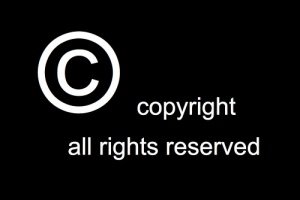 Balancing an open source community with commercial interests can be difficult, which is why HPCC Systems sought the help of Bruce Perens before open sourcing the code for its eponymous big-data-processing software. I covered the open source news last week. Afterward, open source pioneer Perens directed me to an essay he wrote on the HPCC Systems site explaining the new licensing model he helped create for the software that aims to disrupt Hadoop’s big data dominance.
Balancing an open source community with commercial interests can be difficult, which is why HPCC Systems sought the help of Bruce Perens before open sourcing the code for its eponymous big-data-processing software. I covered the open source news last week. Afterward, open source pioneer Perens directed me to an essay he wrote on the HPCC Systems site explaining the new licensing model he helped create for the software that aims to disrupt Hadoop’s big data dominance.
When HPCC Systems launched in June, LexisNexis CTO Armando Escalante told me the company thought it had to open source its code in order to compete with Hadoop, an Apache Software Foundation project, for developer mindshare. HPCC might not have too much of an issue selling large enterprise on its software, but Escalante acknowledged the importance of keeping the product relevant by engaging a community of developers who will keep its features up to date and valuable for new use cases.
But HPCC isn’t a traditional open source project. It has been a proprietary product within LexisNexis for years and is already serving major customers. As Perens explains in his essay:
For this exact reason, the decision to release the HPCC platform as Open Source needs to be justifiable through a sound business plan. The goals of this plan are to capitalize on the innovation and new ideas that come with an Open Source community, develop new use cases from the Open Source users, continue and increase the relevancy of the product by keeping up with Open Source development, and collect direct revenue from the product – not just revenue from ancillary products like support and training.
Dual-licensing, in which products have both open source and commercial licenses, has been the standard way of managing this, but that model comes with its own issues. As Perens explains in great detail, a primary issue is around copyright. The problem essentially is that companies require copyright assignments (see, e.g., the MySQL contributor agreement) from contributors so that the company may put contributions under a commercial license.
The fear with this approach is that a project owner will make all future releases proprietary, taking developers’ intellectual property contributions — or at least their inclusion in a commercially supported free product — with them. This can lead to a lack of contributions around the core code base, requiring companies to undertake much of that development themselves while contributors focus on extensions, forks, embedded versions and other related efforts that don’t directly enhance the core project.
‘The covenant’

Bruce Perens
With that in mind, HPCC Systems and Perens developed a new method of dual licensing, which Perens calls “the covenant.” Essentially, it represents a quid pro quo between the contributor in which companies can get the copyright rights they need to develop products while still giving developers an incentive to contribute.
In the HPCC Systems contributor agreement, the company gets contributors’ copyrights, but it pledges to continue developing and supporting an open source version of the product for three years after each new code contribution it accepts. It’s a rolling agreement, similar to how every change in your wireless service or each phone upgrade locks you into a new two-year contract.
If HPCC Systems wants to discontinue the open source version before three years are up, it must donate the existing code to a nonprofit organization that will support the code under a permissive license. If it doesn’t, HPCC Systems must remove the disputed code from its product altogether. It’s an interesting approach that arguably requires both parties — the company and the contributor — to put skin in the game.
However, one downfall for developers is that, presumably, they’ll have to pursure litigation to get this remedy enforced. That could be expensive and time-consuming, especially if their individual contributions and contracts are construed as unique transactions or sets of facts that don’t warrant the joining of plaintiffs into a single lawsuit that would allow them to split the costs. The hope has to be that HPCC Systems wouldn’t want to get involved with this potentially messy litigation, either, and just honors the terms of the contract.
What do you think? Is HPCC Systems’ covenant the future of open-source dual-licensing, or is there still work to be done?
Feature image courtesy of Flickr user MikeBlogs. Bruce Perens image courtesy of Flickr user Friprog.
Related research and analysis from GigaOM Pro:
Subscriber content. Sign up for a free trial.
- Infrastructure Q1: IaaS Comes Down to Earth; Big Data Takes Flight
- Defining Hadoop: the Players, Technologies and Challenges of 2011
- Putting Big Data to Work: Opportunities for Enterprises
Article source: GigOM http://feedproxy.google.com/~r/OmMalik/~3/WLioND3aW7s/